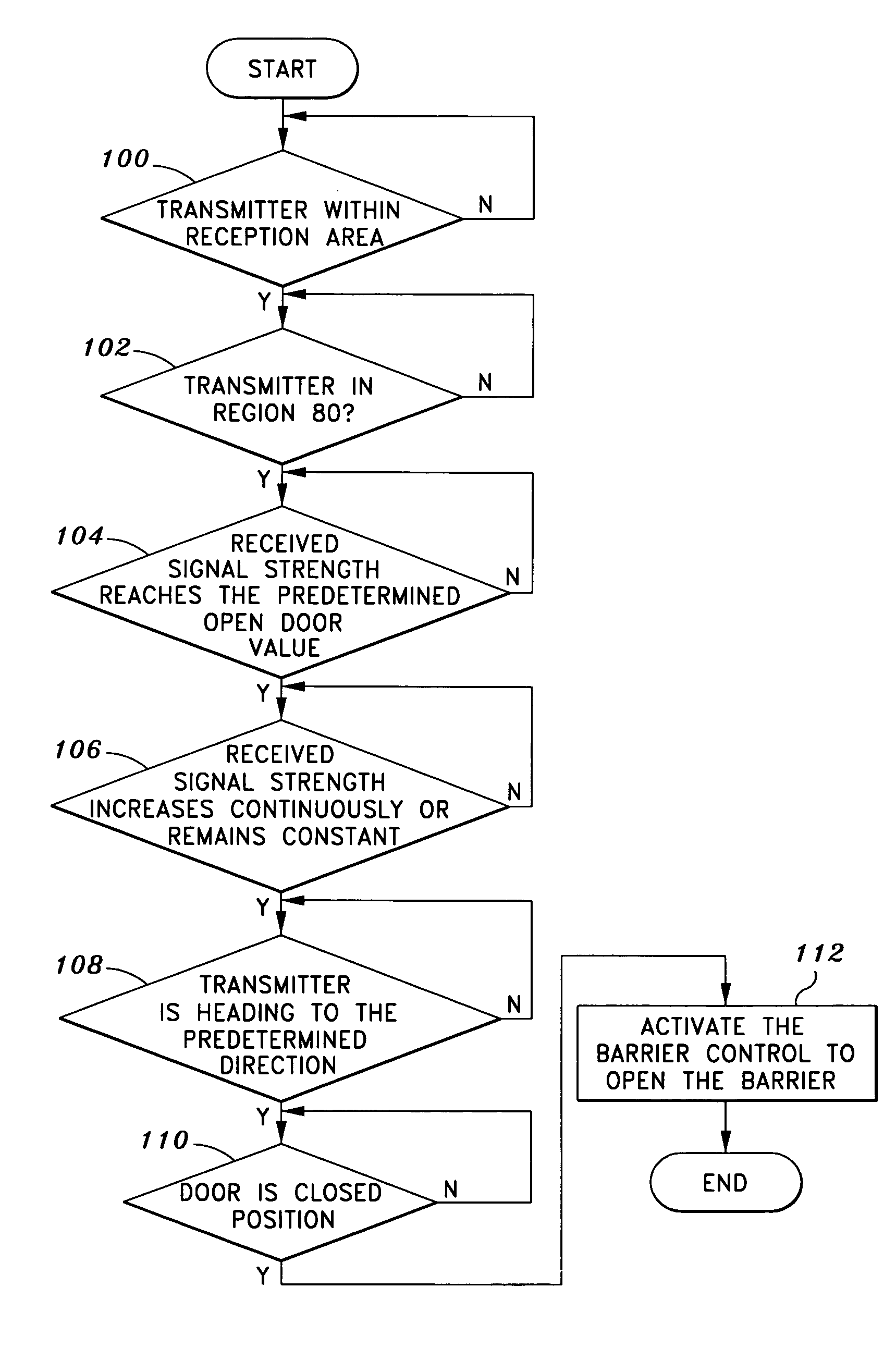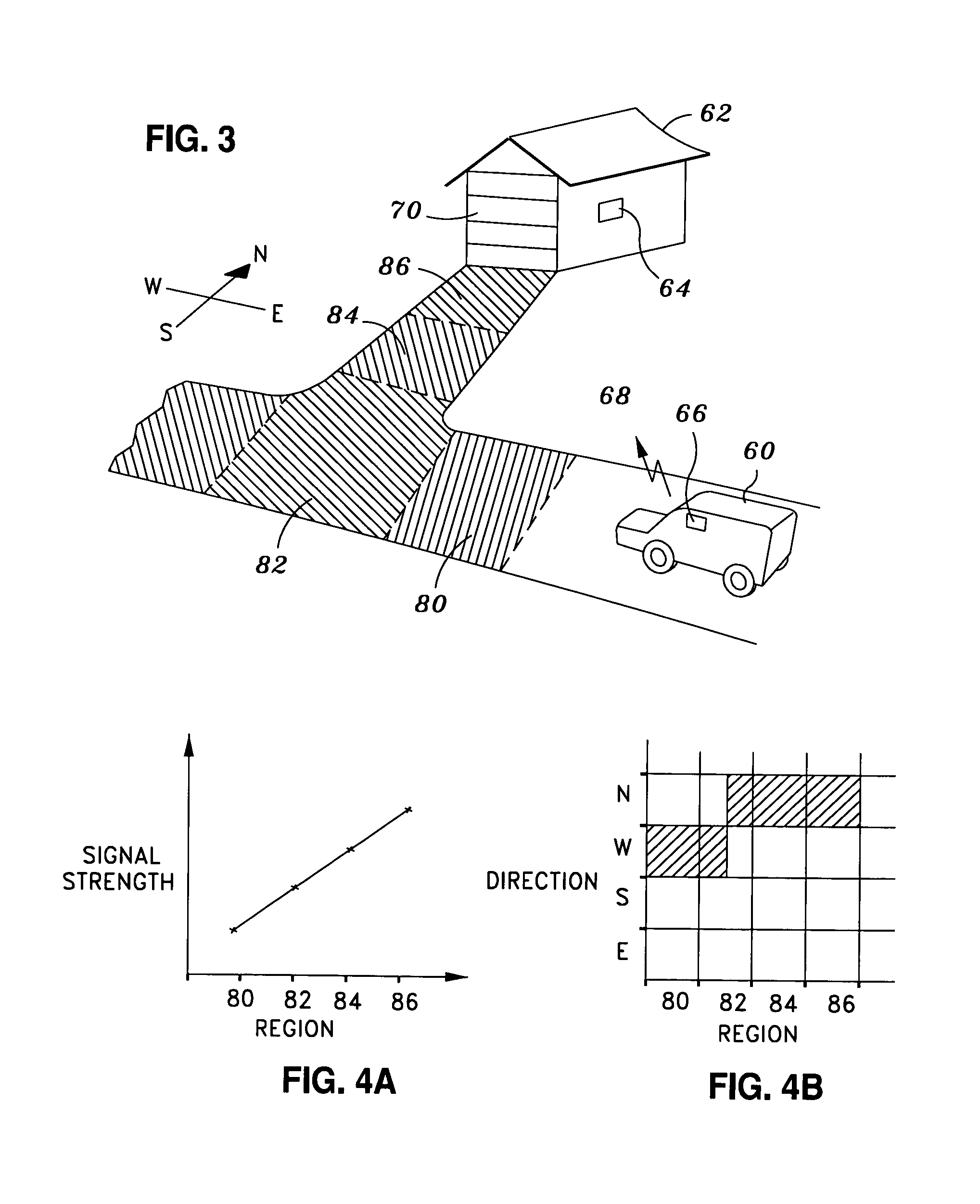Systems and methods for proximity control of a barrier
a technology of proximity control and proximity control, which is applied in the direction of traffic control systems, transmission systems, alarms, etc., can solve the problems of not being convenient or safe for the driver to remove his/her hands, the user may forget to activate the operator to close the barrier, and the use of this technology may be expensiv
- Summary
- Abstract
- Description
- Claims
- Application Information
AI Technical Summary
Benefits of technology
Problems solved by technology
Method used
Image
Examples
Embodiment Construction
[0018]One aspect of the invention involves a proximity barrier control system that comprises a stationary wireless signal receiving device. The signal receiving device may monitor at least one transmitting device within a predetermined coverage area. Such a receiving device may be a radio frequency receiver located near the barrier. The transmitting device may be a radio frequency transmitter attached to a mobile object, such as a vehicle or person. Since the radio frequency receiver is fixed at one location, in one embodiment the only time that the receiver receives signals from the transmitter is when the transmitter is within the reception range. In one embodiment, a barrier control mechanism, to which the receiver may be coupled, actuates the barrier when the transmitter is in close proximity. In yet another embodiment, multiple receiving devices may be used to monitor the position of the transmitting device. The use of multiple receiving devices may reduce the effect of interfe...
PUM
 Login to View More
Login to View More Abstract
Description
Claims
Application Information
 Login to View More
Login to View More - R&D
- Intellectual Property
- Life Sciences
- Materials
- Tech Scout
- Unparalleled Data Quality
- Higher Quality Content
- 60% Fewer Hallucinations
Browse by: Latest US Patents, China's latest patents, Technical Efficacy Thesaurus, Application Domain, Technology Topic, Popular Technical Reports.
© 2025 PatSnap. All rights reserved.Legal|Privacy policy|Modern Slavery Act Transparency Statement|Sitemap|About US| Contact US: help@patsnap.com



